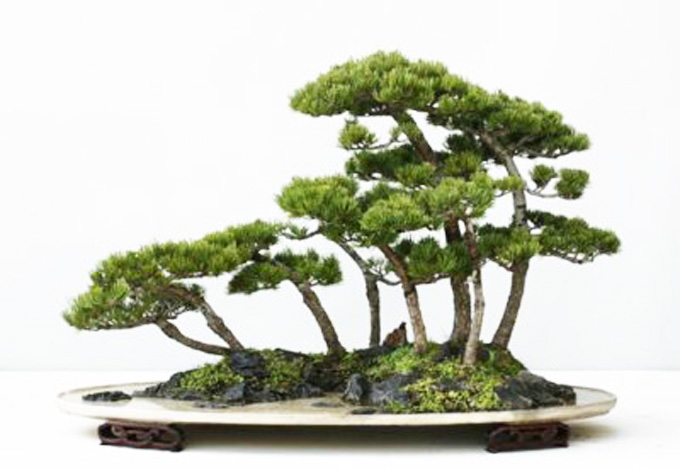 Windswept Japanese white pine tray planting by Zhao Qingquan. I think the wind in this case, is a gentle but persistent on shore breeze.
Windswept Japanese white pine tray planting by Zhao Qingquan. I think the wind in this case, is a gentle but persistent on shore breeze.
I think the two best known Penjing artists in the world are Zhao Qingquan and Robert Steven (Robert refers to what he does as bonsai rather than penjing, but to my eye many, if not most, of his bonsai show strong penjing qualities and he is certainly one of the world’s authorities on the art and history of penjing). We’ve featured Robert numerous times here on Bark (his critiques are quite famous by now) but we’ve seldom featured Zhou (here’s a post that features his wonderful book, Penjing, The Chinese Art of Bonsai), so it’s time to give him his due.
All but one of the photos shown here are borrowed from The Art of Bonsai Project (it’s easier than scanning them from Zhou’s book). We’ve included a quote (below the next photo) that I think captures something about Zhou’s plantings.
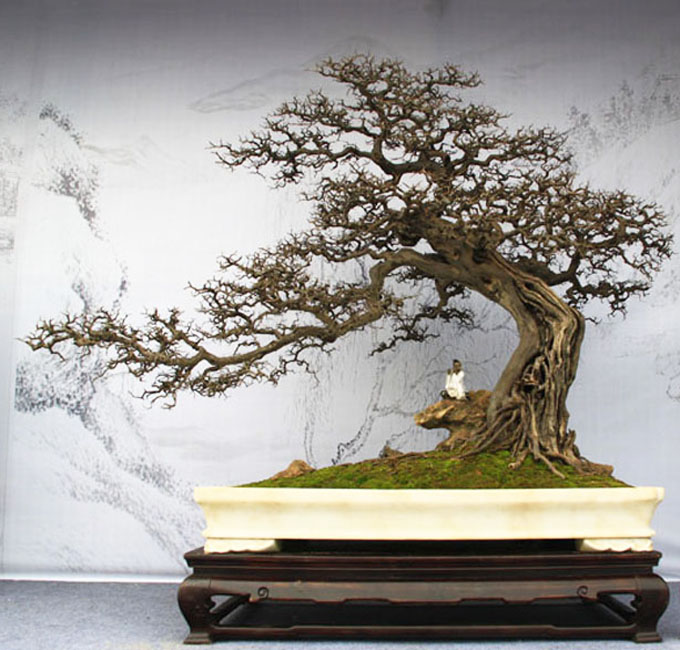 This photo is by Robert Steven. It was taken at the recent BCI Convention in China appears in Bark post from a couple months ago. There’s a photo of this tree with leaves in Zhou’s Penjing, The Chinese Art of Bonsai.
This photo is by Robert Steven. It was taken at the recent BCI Convention in China appears in Bark post from a couple months ago. There’s a photo of this tree with leaves in Zhou’s Penjing, The Chinese Art of Bonsai.
The following quote (lightly edited) is from The Art of Bonsai Project
“Qingquan ‘Brook’ Zhao is one of the best known penjing artists to Western audiences, and rightly so. Zhao has pioneered the land-and-water form of penjing, in which quiet microcosms of the natural world are sculpted from rock, soil, and trees, usually on a marble slab. Bringing together a staggering talent for placing stones, a sensitive eye for natural beauty, and a mastery of tree penjing, Zhao creates marvelous plantings that capture the imagination of young children as deftly as they win the admiration of experienced penjing artists. Zhao does not restrict himself to land-water penjing; he also creates expansive landscape penjing that are dominated by natural rock formations, and graceful tree penjing. Zhao’s book, Penjing: The Chinese Art of Bonsai, shows additional examples from all three styles.”
 This remarkable Japanese maple planting shows a refined yet natural sensibility. It’s just a little fuzzy, but still, it’s hard to miss Zhou’s sure eye and deft touch.
This remarkable Japanese maple planting shows a refined yet natural sensibility. It’s just a little fuzzy, but still, it’s hard to miss Zhou’s sure eye and deft touch.
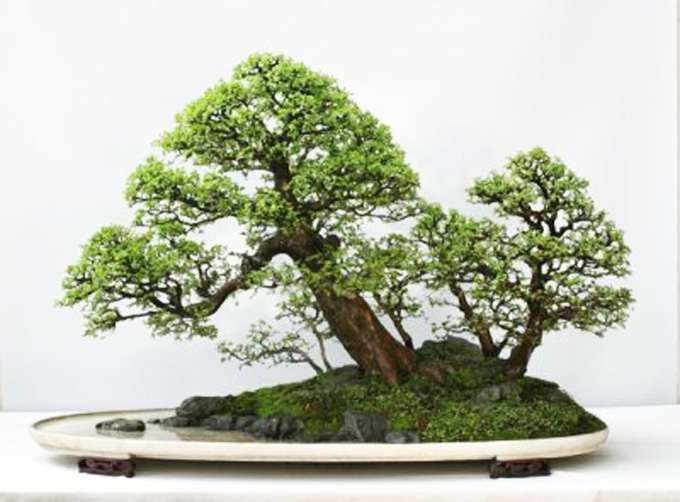 This Chinese elm tray planting with its contrast in the size and apparent age of the trees, creates a powerful connection with both time and space.
This Chinese elm tray planting with its contrast in the size and apparent age of the trees, creates a powerful connection with both time and space.
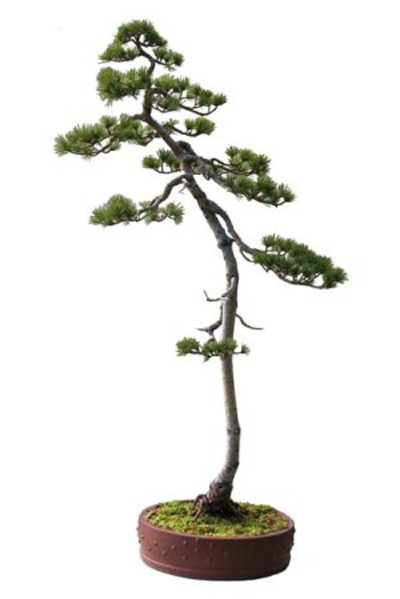 This Japanese white pine looks as though it might have been done a bunjin artist from Japan. Still, there’s something Penjing about it.
This Japanese white pine looks as though it might have been done a bunjin artist from Japan. Still, there’s something Penjing about it.
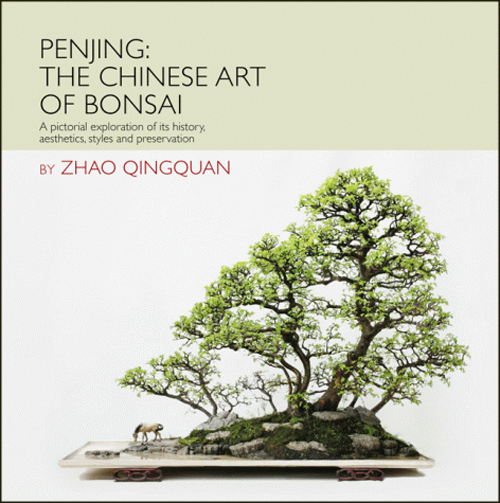 Penjing, The Chinese Art of Bonsai is, without a doubt, the best English language penjing book (in or out of print).
Penjing, The Chinese Art of Bonsai is, without a doubt, the best English language penjing book (in or out of print).
Hi .Do you know / stock ‘Chinese Penjing’ ….Hu Yunhua…?
this book would a great additon to anyone’s library…
English text and in my opinion a quality well above the book you posted above.
Regards. Trevor
Trevor, it is an old book.
Not many knows that Hun Yun Hua was my first “real” teacher from whom I was first encountered with aesthetic rather than “rules” in bonsai art. He gave enlightment to me just after I almost quit from practicing bonsai due to the “rules” I was told to apply. And that’s what couraged me to continue digging the new concept and came out with my first book…
Thanks Trevor for bringing up up Hun Yun Hua’s book and thanks Robert for your reply and for your noting the difference between rules and aesthetics.
It has been years since I’ve even seen Hua Yun Hua’s Chinese Penjing book. For some reason there’s not one in my personal library, which means I most likely sold our last copy without realizing that it was going out of print. That wouldn’t be the first time. Oh well…